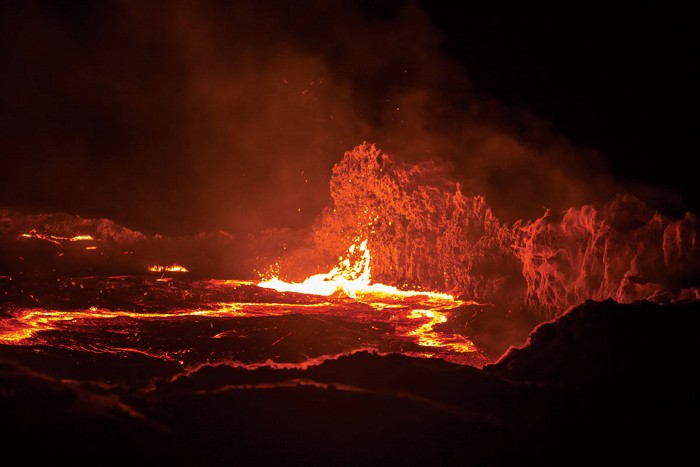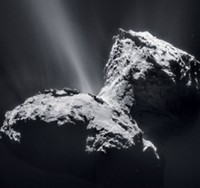Advertisement
Grab your lab coat. Let's get started
Welcome!
Welcome!
Create an account below to get 6 C&EN articles per month, receive newsletters and more - all free.
It seems this is your first time logging in online. Please enter the following information to continue.
As an ACS member you automatically get access to this site. All we need is few more details to create your reading experience.
Not you? Sign in with a different account.
Not you? Sign in with a different account.
ERROR 1
ERROR 1
ERROR 2
ERROR 2
ERROR 2
ERROR 2
ERROR 2
Password and Confirm password must match.
If you have an ACS member number, please enter it here so we can link this account to your membership. (optional)
ERROR 2
ACS values your privacy. By submitting your information, you are gaining access to C&EN and subscribing to our weekly newsletter. We use the information you provide to make your reading experience better, and we will never sell your data to third party members.
Geochemistry
Iron-rich meteorites and volcanic ash catalyzed prebiotic molecules on early Earth
Hydrogenation catalysts may have rained down on the early Earth
by Alla Katsnelson, special to C&EN
May 25, 2023
| A version of this story appeared in
Volume 101, Issue 17

Researchers have long debated how the molecular components needed for life came to exist in the bleak environment of the early Earth about 4 billion years ago. Researchers now present experimental evidence for a new possibility—that metals from iron-rich meteorites pelting the planet from above, as well as from volcanic particles spewing from within, catalyzed the fixation of carbon dioxide, the dominant gas in the atmosphere at the time. This helped build basic carbon-containing molecules such as hydrocarbons, aldehydes, and alcohols, which could then perform the reactions that generated more complex biotic molecules.
“We have closed a gap in the story of initiating life,” says Oliver Trapp, a chemist at Ludwig Maximilian University of Munich, who led the work (Sci. Rep. 2023, DOI: 10.1038/s41598-023-33741-8).
The idea hit Trapp like a meteorite—literally. One day about 6 years ago, he was examining a meteorite he had purchased that was part of the Campo del Cielo, a cluster of meteorites thought to have fallen to Earth more than 4,000 years ago in Argentina. Reading the certificate listing the rock’s components–92% iron, 7% nickel, 0,5% cobalt, and a sprinkle of iridium—he imagined a meteorite hurtling through the atmosphere. It would slow down and heat up, causing the outside of the rocks to form nanoparticles. “Of course, these nanoparticles are highly reactive,” Trapp says. “I immediately realized this was the perfect Fischer-Tropsch catalyst.”
To test their idea experimentally, he and his colleagues made nanoparticles from meteorites and from volcanic ash and minerals. They put these materials into chambers that simulated a variety of atmospheric and climate conditions of that time—specifically, different atmospheric pressures and temperatures, different ratios of CO2 and hydrogen, and wet versus dry climate conditions. Across climate scenarios, the iron and other metals in the meteorite and ash particles catalyzed the synthesis of prebiotic molecules.
“Under [all] these conditions you are getting really, really similar compositions of these oxygenated compounds, which are really nice building blocks that can continue to generate chemistry,” Trapp says. Based on the rate of reactions observed, as well as estimates from other studies of ancient meteorite activity, the researchers calculated that this mechanism could have churned out 600,000 metric tons of these molecules per year, for tens to hundreds of millions of years. The team is now conducting large-scale simulation models and experiments to explore what kinds of reactions this initial prebiotic mixture molecules might have undergone and what larger compounds it might have produced.
“It’s surprising that chemists haven’t until recently systematically looked at how inorganic volcanic and meteoritic particles react with CO2,”, says Joseph Moran, a chemist at the University of Strasbourg. “The early Earth was producing hydrogen and hydrogenation catalysts were literally raining down from the sky,” Moran says. “Perhaps it is no coincidence that very ancient organisms were running their metabolisms on hydrogenation.”





Join the conversation
Contact the reporter
Submit a Letter to the Editor for publication
Engage with us on Twitter